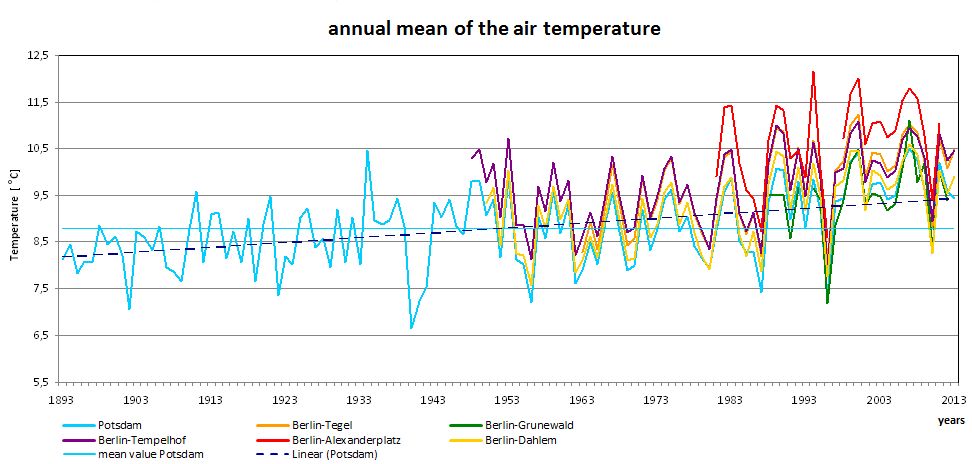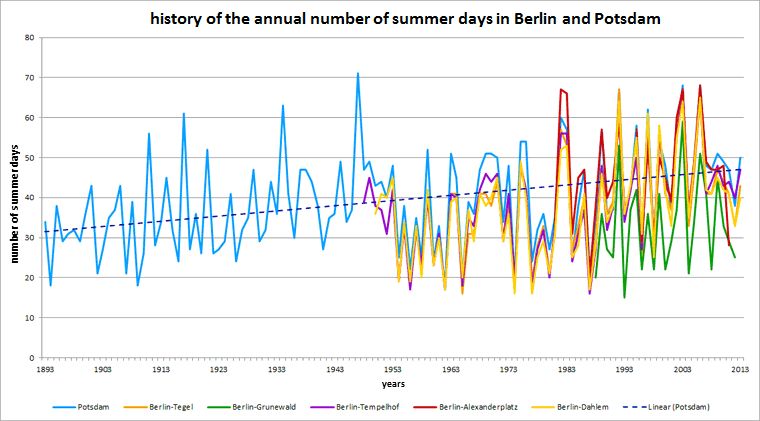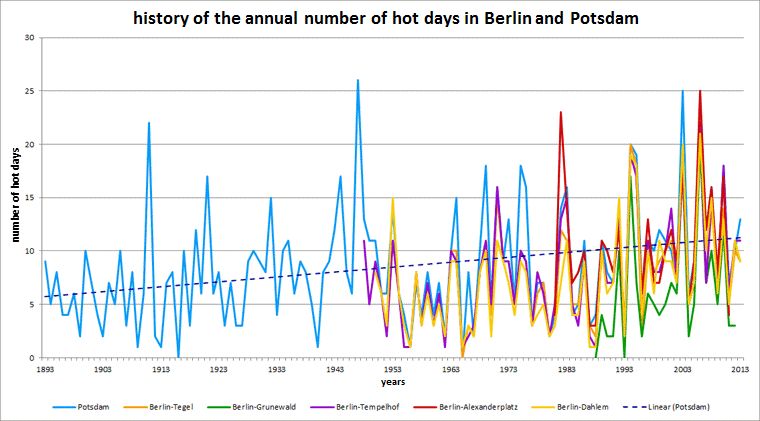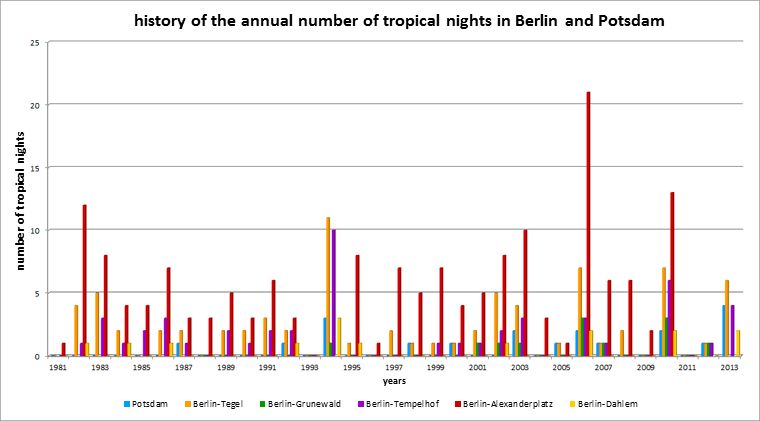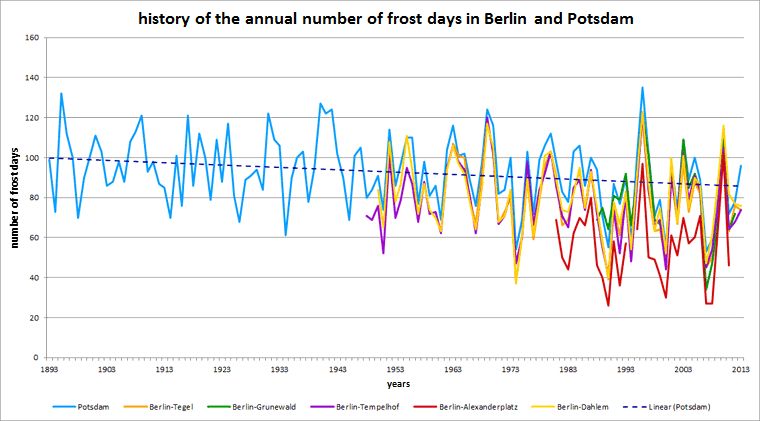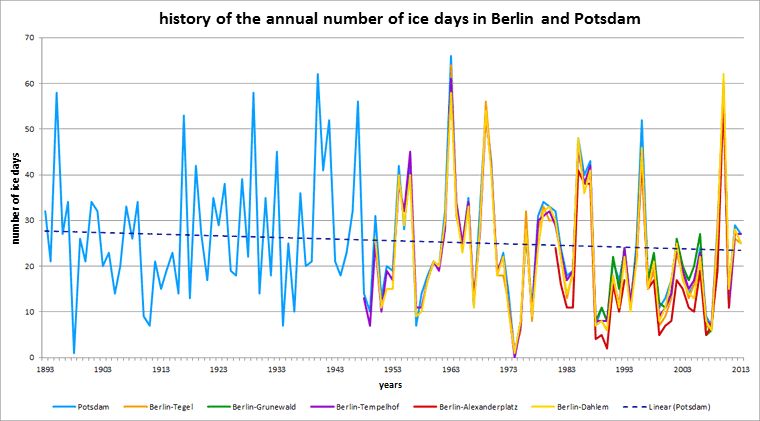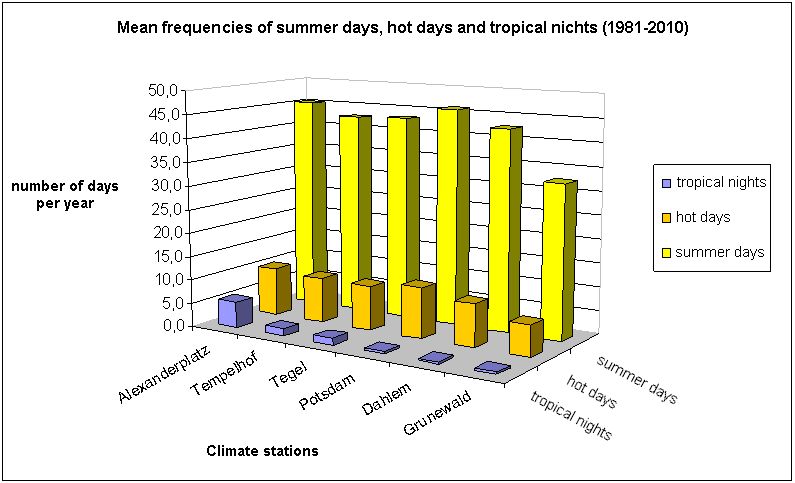The main measurement data at the stations under consideration are first considered in combination in order to analyse differences and common features of the measurement sites. The focus of the considerations is on the period from 1981 to 2010, as climate data are available for most of the stations under consideration in this period and these 30 years are regarded as a current period for considering "long-term climate conditions".
The individual data are provided in relation to the figures in a combined table for all stations (with reference to the summer and winter characteristic quantities) as well as individual station tables (including all daily values since records began). However, they are also available for download in a combined archive (zip; 110 MB).
Comparison of the measurement series of the Berlin stations Tempelhof, Tegel, Dahlem, Alexanderplatz and Grunewald as well as the Potsdam station
The history of the air temperature of all five Berlin measurement stations as well as the Potsdam station is illustrated in Figure 1.1. The data for the stations Berlin-Alexanderplatz and Berlin-Grunewald were available only up to the end of 2012, for all other measurement sites up to the end of 2013.
Measurements going back to 1893 are available for the Potsdam measurement station; hence a trend line (dashed in dark blue) and a mean value across all measurement years (light blue) are additionally shown for this station. These clearly indicate the rise in air temperature within the period under consideration. The trend line shows a warming of more than 1 K between 1893 and 2013. While the temperature values of the Potsdam station were significantly below the mean value when records began, they are consistently above the mean value line for the last 20 years. It can also be seen that the Alexanderplatz station consistently exhibits the highest values in comparison to the other stations. The Berlin-Tempelhof station with its inner-city peripheral location also shows higher temperature values than the stations in peripheral locations or in the surroundings.

